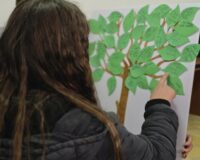Today is a special day in the environmental calendar, May 15 coincides with Endangered Species Day. Unfortunately, the number of threatened species is very large, as a result of the destruction of habitats, human influence, wrong policies, etc.
Today is the right moment to pay special attention and to raise public awareness about endangered species. But what are the threatened species? How many such types do we have in Albania?
Threatened species according to IUCN (The International Union for Conservation of Nature), are those species that are predisposed to disappear from their natural habitats in the near future. They are divided into 3 categories: Vulnerable (VU), Endangered (EN), Critically Engaged (CR). According to the Red List of Albania, approved by the Ministry of Environment in September 2013, there are 575 species of threatened flora and fauna according to IUCN categories.
Among them is the Egyptian vulture (Neophron percnopterus) to whom we dedicate this day. This species is one of the 23 species of vultures and is widespread in southern Europe, eastern and central Asia, northern Africa, Arabia, Tanzania, Angola, etc. They can live in coastal areas, savannas, open fields, forests and villages. In Albania, individuals of this type can be counted on the fingers of the hand.
The Egyptian vulture is a nesting scavenger bird with a medium-sized body. It is generally white to yellow with black borders on the long wings. The silhouette in flight is characteristic, with a sharp triangular tail, a small head and a narrow, long beak. The arms are relatively wide, with “fingers” and quite long. The yellow color and bare skin on the head is visible in the distance. Dark brown young, over time this plumage turns dark brown, slowly losing contrast. It is the most common vulture in Albania, more common in the south than in the north.
It nests alone in the rocks of the continental mountain area (Saranda, Gjirokastër, Tepelën, Skrapar, Tirana, Peshkopi, etc.) but also on the Ionian coast (Llogora – Çike). They lay 1-3 eggs in early April. The heating lasts 42 days. The young reach flight after 2-3 months (Bino et al, 2006). They become sexually mature in the sixth year of their life. Both parents take care to bring food to the young until they are able to fly. Their lifespan in natural conditions ranges from 30-37 years.
The number of these birds has decreased drastically due to poisoning (since they feed on carrion which may contain various poisons such as lead, pesticides, etc.), bird pox disease. In Albania, hunting by shepherds who hunt them out of ignorance, who considered them as a threat to the herds of cattle, has also been a problem for these birds.
By Earta Nuna/ EcoAlbania








